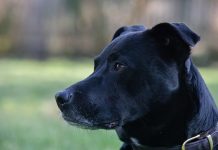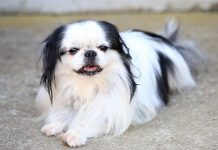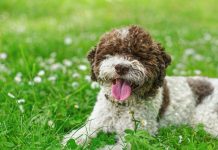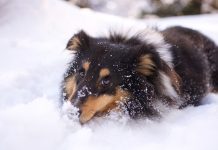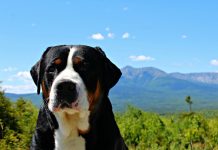History and Origins of the Old English Sheepdog Breed

The Old English Sheepdog, with its distinctive shaggy coat and friendly demeanor, is a breed that has captured the hearts of dog lovers for centuries. The history and origins of this breed are both fascinating and deeply rooted in the pastoral landscape of England.
The origins of the Old English Sheepdog can be traced back to the early 19th century in the rural regions of England, particularly in the sheep farming areas of the West Country and the Midlands. As its name suggests, this breed was primarily developed to assist in the herding and management of sheep—a task it performed with great skill and enthusiasm.
The exact ancestry of the Old English Sheepdog is somewhat uncertain, but it is believed to have descended from several breeds that were commonly used for herding purposes in England. Among these are thought to be the Scottish Bearded Collie, the Russian Owtchar, and various other European sheepdogs. The breed’s iconic appearance, characterized by its thick, weather-resistant coat and robust build, was well-suited to the demanding conditions of sheep farming in England.
One of the earliest mentions of a dog resembling the Old English Sheepdog dates back to the early 19th century. Paintings and sketches from this period depict dogs with striking similarities to the modern breed, suggesting that its distinctive characteristics were already well established by this time. These early dogs were valued not only for their herding abilities but also for their loyalty and intelligence.
The Old English Sheepdog gained popularity throughout the 19th century as a versatile and reliable working dog. It was particularly prized by shepherds for its ability to manage large flocks of sheep over long distances and challenging terrain. The breed’s dense coat provided protection from the harsh British climate, allowing it to work outdoors in all weather conditions.
In addition to their role as working dogs, Old English Sheepdogs also became popular as companions and pets among the rural gentry and aristocracy. Their friendly and affectionate nature, coupled with their distinctive appearance, made them highly sought after as household pets. Many notable figures, including Queen Victoria of England, were known to be fond of the breed.
The breed’s popularity continued to grow into the 20th century, both in England and abroad. Old English Sheepdogs were exported to other countries, particularly the United States, where they gained a devoted following among dog enthusiasts. The American Kennel Club officially recognized the breed in 1905, further cementing its status as a beloved companion and show dog.
However, the breed’s fortunes changed dramatically during the mid-20th century. Changes in agricultural practices and the decline of traditional sheep farming led to a decline in the demand for working sheepdogs, including the Old English Sheepdog. As a result, the breed’s numbers dwindled, and it faced the threat of extinction.
Fortunately, dedicated breed enthusiasts worked tirelessly to preserve and promote the Old English Sheepdog. Through careful breeding and advocacy, the breed was saved from obscurity and revitalized in the latter half of the 20th century. Today, the Old English Sheepdog remains a popular and recognizable breed, cherished for its distinctive appearance, gentle temperament, and enduring loyalty.
In conclusion, the history and origins of the Old English Sheepdog are deeply intertwined with the pastoral traditions of England. From its humble beginnings as a working farm dog to its status as a beloved family companion, this breed has left an indelible mark on the world of dogs. Through its enduring popularity and unique charm, the Old English Sheepdog continues to captivate dog lovers around the globe.
Physical Characteristics and Appearance of Old English Sheepdogs
The Old English Sheepdog is a large, strong, and squarely proportioned breed with a distinctive appearance characterized by its shaggy coat and expressive face. Here are the key physical characteristics of the breed:
- Size: Old English Sheepdogs are a medium to large breed. Males typically stand around 22 inches to 24 inches (56-61 cm) at the shoulder, while females are slightly smaller, ranging from 21 inches to 23 inches (53-58 cm). They typically weigh between 60 to 100 pounds (27-45 kg).
- Coat: The most recognizable feature of the Old English Sheepdog is its dense, profuse coat, which consists of a soft, water-resistant undercoat and a coarse, long outer coat. The coat covers the entire body, including the face and eyes, often obscuring the breed’s distinctive features. Regular grooming and maintenance are essential to prevent matting and tangles.
- Color: Old English Sheepdogs come in various colors, including solid gray, blue, or blue merle, as well as combinations of gray, white, and sometimes patches of brown or other colors. Puppies may have a different coat color than adults, often lightening as they mature.
- Body: The breed has a robust and muscular build with a broad chest, straight back, and strong legs. The tail is usually docked in countries where this practice is allowed, giving the dog a stubby appearance.
- Head and Face: The head is large and square with a pronounced stop. The eyes are typically dark and expressive, often partially hidden beneath the shaggy hair. The ears are small to medium in size and lie flat against the head.
Old English Sheepdog Temperament and Personality Traits
The Old English Sheepdog is known for its friendly, affectionate, and adaptable temperament. Here are some key personality traits of the breed:
- Intelligent: Old English Sheepdogs are highly intelligent and trainable. They excel in obedience and agility training, although they can sometimes be independent thinkers. Early socialization and consistent, positive training methods are essential for shaping their behavior.
- Gentle and Affectionate: Despite their large size, Old English Sheepdogs are gentle giants who form strong bonds with their families. They are known for their affectionate nature and are particularly good with children, often assuming a protective role.
- Sociable: This breed enjoys human companionship and thrives as part of a family. They are generally friendly toward strangers and get along well with other pets when properly socialized from a young age.
- Playful and Energetic: Old English Sheepdogs have a playful and exuberant personality, especially in their youth. They require regular exercise to keep them physically and mentally stimulated, preventing boredom and potential destructive behaviors.
- Watchful and Protective: While not aggressive, Old English Sheepdogs have a natural instinct to protect their family and home. They make excellent watchdogs due to their alertness and tendency to bark at unfamiliar sounds or visitors.
- Adaptable: Despite their origins as working dogs, Old English Sheepdogs can adapt well to various living situations, including urban environments, as long as they receive adequate exercise and attention.
Overall, the Old English Sheepdog is a delightful companion known for its loving nature, intelligence, and distinctive appearance. With proper care, training, and socialization, this breed makes an excellent family pet and loyal companion for dog enthusiasts of all ages.
Training and Socialization Needs for Old English Sheepdogs
Old English Sheepdogs are intelligent and eager to please, but they can also be independent thinkers. Training and socialization are crucial to ensure they become well-rounded and well-behaved companions. Here are some key considerations for training and socializing Old English Sheepdogs:
- Early Training: Start training your Old English Sheepdog early, ideally when they are puppies. They respond well to positive reinforcement techniques such as treats, praise, and play. Consistency and patience are key, as this breed may have a stubborn streak.
- Basic Obedience: Teach essential commands like sit, stay, come, and heel. Use reward-based methods and keep training sessions engaging and short to maintain their interest.
- Socialization: Expose your Old English Sheepdog to various people, animals, sights, and sounds from an early age. This helps prevent shyness or aggression towards unfamiliar situations later in life. Arrange playdates with other dogs and enroll them in puppy classes to promote positive interactions.
- Exercise Needs: Old English Sheepdogs are energetic and require regular exercise to stay healthy and happy. Provide daily walks, play sessions, and mental stimulation through interactive toys or activities like agility training.
- Grooming Routine: Get your Old English Sheepdog used to grooming early on, as their thick coat requires regular maintenance. Brush their coat several times a week to prevent matting, trim the fur around their eyes for better visibility, and bathe them as needed.
- Consistent Leadership: Establish yourself as a firm but fair leader. Old English Sheepdogs respond well to confident and consistent training methods. Avoid harsh discipline, as it can damage their trust and willingness to learn.
- Patience and Persistence: Training a Old English Sheepdog can be challenging due to their independent nature. Stay patient, stay consistent, and seek professional guidance if needed to address specific behavioral issues.
Health Considerations and Common Issues in Old English Sheepdogs
While generally healthy, Old English Sheepdogs are prone to certain genetic health conditions. Responsible breeding and regular veterinary care are essential to maintaining their well-being. Here are some common health considerations for this breed:
- Hip Dysplasia: Like many large breeds, Old English Sheepdogs can be susceptible to hip dysplasia, a hereditary condition where the hip joint doesn’t develop properly. Regular exercise, maintaining a healthy weight, and screening breeding dogs can help reduce the risk.
- Progressive Retinal Atrophy (PRA): This is a degenerative eye disease that can eventually lead to blindness. Responsible breeders test for PRA to minimize its prevalence in the breed.
- Cataracts: Old English Sheepdogs are prone to developing cataracts, a clouding of the lens in the eye that affects vision. Regular eye exams can help detect and manage this condition.
- Deafness: Some Old English Sheepdogs may be born deaf or develop hearing loss over time. Breeders can conduct hearing tests to identify affected individuals.
- Skin Issues: The dense coat of the Old English Sheepdog can make them prone to skin problems such as hot spots, allergies, and infections. Regular grooming and proper coat care can help prevent these issues.
- Obesity: Due to their size and love for food, Old English Sheepdogs are at risk of becoming overweight. Monitor their diet and provide regular exercise to prevent obesity-related health problems.
- Bloat (Gastric Dilatation-Volvulus): This is a life-threatening condition where the stomach fills with gas and twists. Feeding multiple small meals a day, rather than one large meal, and avoiding vigorous exercise after eating can help reduce the risk.
Regular veterinary check-ups, a balanced diet, and providing a healthy lifestyle are key to ensuring the longevity and well-being of your Old English Sheepdog. Stay informed about breed-specific health concerns and work closely with your veterinarian to address any issues promptly.
Living with an Old English Sheepdog: Suitable Environments and Lifestyle Considerations

Old English Sheepdogs are wonderful companions but require specific environments and care to thrive. Here are some considerations for living with an Old English Sheepdog:
- Space Requirements: Old English Sheepdogs are large and active dogs that need ample space to move around. While they can adapt to apartment living with sufficient exercise, they are best suited to homes with a fenced yard where they can roam and play freely.
- Exercise Needs: This breed is energetic and requires daily exercise to stay healthy and happy. Plan for at least 30-60 minutes of moderate to vigorous activity each day, such as walks, playtime, or obedience training. Without sufficient exercise, they may become bored and exhibit destructive behaviors.
- Grooming Commitment: The dense coat of an Old English Sheepdog requires regular grooming to prevent matting and tangles. Plan for weekly brushing sessions and more frequent grooming during shedding seasons. Professional grooming may also be needed periodically to maintain their coat.
- Climate Considerations: The thick double coat of the Old English Sheepdog provides insulation against cold weather but can be challenging in hot climates. Ensure they have access to shade and fresh water during warm weather, and avoid excessive exercise during the hottest parts of the day.
- Family Dynamics: Old English Sheepdogs are affectionate and do well in family settings, including households with children and other pets. They thrive on attention and enjoy being part of the family activities. Supervise interactions with young children due to their large size.
- Training and Socialization: Consistent training and early socialization are essential for this breed. They respond well to positive reinforcement techniques but can be stubborn at times. Enroll them in obedience classes and expose them to various environments to help them become well-adjusted adults.
- Health Monitoring: Stay vigilant about their health, including regular vet check-ups, dental care, and maintaining a healthy diet. Be aware of breed-specific health concerns and address any issues promptly.
Old English Sheepdog Variations and Breeding Practices
Old English Sheepdogs exhibit some variations in appearance and temperament, influenced by breeding practices and individual genetics. Here are some considerations related to variations and breeding practices:
- Coat Color: Old English Sheepdogs come in various colors, including gray, blue, blue merle, and combinations of white with patches of color. Some colors are more sought after in the show ring, but all coat colors are acceptable according to breed standards.
- Size and Build: While there is a general breed standard for size, individual dogs may vary in height and weight. Some breeders may focus on specific traits such as larger size or more robust build, while others prioritize temperament and health.
- Breeding Ethics: Responsible breeders prioritize the health, temperament, and overall well-being of the dogs. They conduct health screenings, genetic testing, and adhere to breed standards set by kennel clubs. Avoid purchasing from puppy mills or backyard breeders who prioritize profit over the welfare of the dogs.
- Crossbreeding: Old English Sheepdogs are sometimes crossed with other breeds to create designer mixes, such as the Sheepadoodle (Old English Sheepdog and Poodle mix). While crossbreeds can inherit desirable traits from both parents, it’s essential to research the breeder and ensure they are reputable.
- Breeding for Purpose: Historically, Old English Sheepdogs were bred for herding and farm work. Today, most are bred as companions and show dogs. However, some breeders still focus on preserving the breed’s working abilities while others prioritize conformation and appearance for the show ring.
When considering adding an Old English Sheepdog to your family, research reputable breeders, visit local shelters and rescues, and be prepared for the commitment of caring for this unique and loving breed. With the right environment and care, an Old English Sheepdog can be a cherished family member and loyal companion for many years.
50 Best Names with Meanings for Old English Sheepdogs
Old English Sheepdogs are known for their distinctive appearance and lively personalities. When choosing a name for your Old English Sheepdog, you might want to consider names that reflect their heritage, appearance, or charming nature. Here’s a list of 50 names along with their meanings that could suit this breed:
- Winston – Means “joy stone.”
- Mabel – Means “lovable.”
- Barnaby – Means “son of consolation.”
- Matilda – Means “battle-mighty.”
- Arthur – Means “noble and courageous.”
- Agatha – Means “good-hearted.”
- Monty – Short for “Montgomery,” meaning “man power.”
- Hilda – Means “battle woman.”
- Percival – Means “piercing the valley.”
- Daphne – Means “laurel tree.”
- Reginald – Means “advice ruler.”
- Greta – Means “pearl.”
- Walter – Means “ruler of the army.”
- Edith – Means “prosperous in war.”
- Clive – Means “cliff.”
- Winifred – Means “blessed peacemaking.”
- Cedric – Means “bounty of the battle.”
- Mavis – Means “songbird.”
- Wilbur – Means “resolute fortress.”
- Constance – Means “steadfast.”
- Rupert – Means “bright fame.”
- Ethel – Means “noble.”
- Alfred – Means “wise counselor.”
- Elsie – Diminutive of “Elizabeth,” meaning “pledged to God.”
- Harold – Means “leader of an army.”
- Enid – Means “soul” or “life.”
- Bertie – Means “bright ruler.”
- Winona – Means “firstborn daughter.”
- Oswald – Means “divine ruler.”
- Mildred – Means “gentle strength.”
- Ernest – Means “serious; resolute.”
- Martha – Means “lady” or “mistress of the house.”
- Cyril – Means “lordly.”
- Gladys – Means “princess.”
- Bernard – Means “bold as a bear.”
- Elaine – Means “bright, shining light.”
- Clement – Means “merciful.”
- Winchester – Means “fortress.”
- Hugo – Means “intelligent; bright in mind and spirit.”
- Agnes – Means “chaste” or “pure.”
- Rex – Means “king.”
- Eleanor – Means “bright, shining one.”
- Lancelot – Means “servant.”
- Florence – Means “flourishing” or “prosperous.”
- Gordon – Means “great hill.”
- Ida – Means “industrious one.”
- Norman – Means “man from the north.”
- Sybil – Means “prophetess.”
- Roger – Means “famous spear.”
- Beatrice – Means “bringer of joy.”

Choose a name that resonates with you and your dog’s personality. Whether it’s a nod to their historical roots or a name that simply sounds fitting, your Old English Sheepdog will appreciate the attention and love that comes with their new name.






